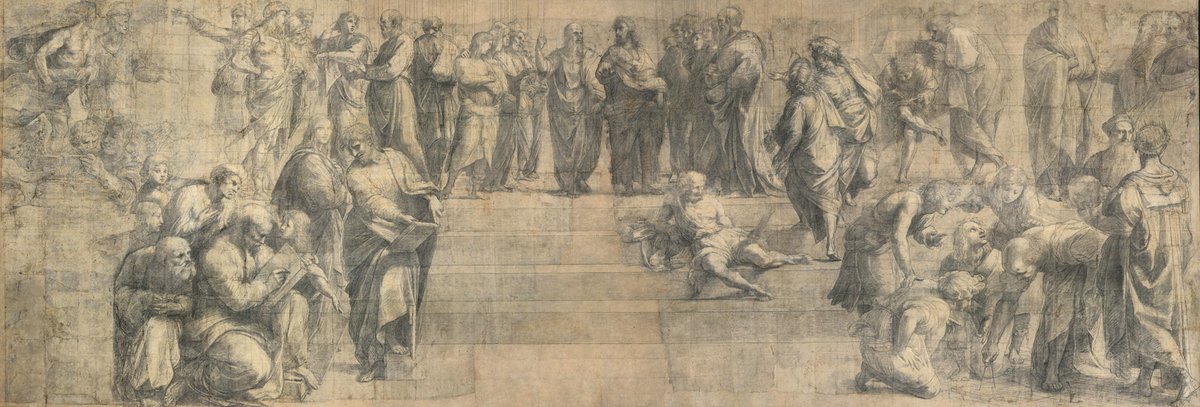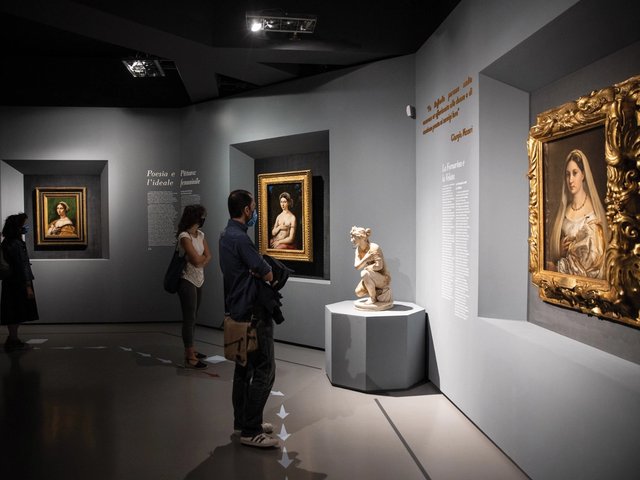It took a crane to lift the enormous vitrine for Raphael’s restored cartoon, The School of Athens (around 1508), into Milan’s Biblioteca Ambrosiana last October. Protected under the 24 sq. m sheet of glass, the largest surviving Renaissance cartoon will go back on view in the library’s art gallery on 27 March, following a four-year restoration funded by Ramo, the firm of the entrepreneur and late drawings collector Giuseppe Rabolini. The architect Stefano Boeri has redesigned the room dedicated to the work for the first time since the 1960s.
Unlike a typical cartoon, in which the outlines are traced before being pierced with holes and rubbed with charcoal to transfer it to the wall, Raphael’s drawing is highly finished. The artist made the full-scale preparatory drawing for The School of Athens, the most famous of his four frescoes decorating the Stanza della Segnatura in the Vatican, so he could show the design to his patron, Pope Julius II. The work was perforated, but only to create another cartoon that was destroyed during the transfer process.
The restoration of the drawing, overseen by experts from the Vatican Museums, Rome’s Higher Institute for Conservation and Restoration and La Venaria Reale Conservation and Restoration Centre, was mainly structural. Two supports of canvas and paper, applied to the work in the late 18th century after it was looted by Napoleon and taken to France, had separated in several places, partly as the result of a later fungal attack. A vinyl glue used during a 1960s restoration had also caused warping.
While respecting the 18th-century lining, conservators reinforced the work with three layers of Japanese paper and one of canvas, which have restored an even surface. The new vitrine will be fundamental to future conservation, maintaining optimal light and humidity levels and allowing the work to be monitored around the clock.



